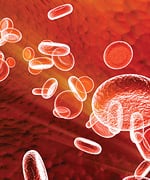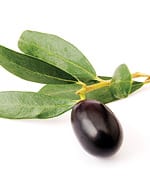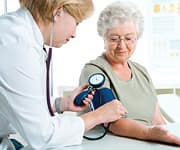Life Extension Magazine®
High blood pressure is one of the most accurate predictors of cardiovascular disease,1 the number one killer of Americans. Tragically, mainstream medicine’s definition of what constitutes high blood pressure remains dangerously high. According to current medical standards, so-called “stage I hypertension” begins at readings of 140/90 mmHg or higher.2 Yet as Life Extension® has long warned, a review of the scientific literature suggests that for every 20/10 mmHg increase above 115/75 mmHg, your risk of cardiovascular disease doubles.2 Findings from a study published in late 20113 underscore the cost of this medical malfeasance in human lives. This retrospective, population-based analysis of 26 million people revealed a 200-400% higher mortality rate in hypertensive individuals between the ages of 20-49, compared to the general population without hypertension. If the definition of “high blood pressure” were revised downward to reflect the significant threat of even moderate hypertension, millions of these lives could have been saved. What this means is that maturing individuals need to take all necessary steps to bring blood pressure under control, regardless of their doctors’ evaluations. The exciting news is that these alarming findings coincide with a newly identified technology that yields a highly refined form of antihypertensive nutrient.* In this article, you will learn about oleuropein, a bioactive compound found in standardized olive leaf extract. When tested on hypertensive patients in a double-blind, controlled clinical trial, this highly stable form of oleuropein reduced systolic blood pressure by an average 11.5 points (mmHg), diastolic blood pressure by 4.8 points4 and provided other vascular health benefits. Targeting Hypertension’s Primary Cause
The olive fruit (Olea europaea) is a core constituent of the Mediterranean diet. Its broad-spectrum health benefits have been well documented in the clinical literature. Olive fruit’s array of beneficial compounds includes hydroxytyrosol, oleacein, ursolic,and oleanic acids. However, it is oleuropein, found in high concentrations in the leaf of the olive tree, that is largely responsible for the beneficial effect on high blood pressure.5-9 Why? A multitude of causative factors underlies uncontrolled blood pressure. Many cases of hypertension involve increased arterial stiffness.10 This stiffness, or lack of elasticity, usually begins in the arterioles—tiny peripheral arteries most distant from the heart—and eventually spreads to larger arteries. Oleuropein has been shown to specifically target arterial resistance and stiffness, improving endothelial function and bringing blood pressure under control. It accomplishes this in part by modulating calcium channel flow—with an excellent tolerability profile.4,11-14 While tolerability has been excellent with oleuropein, the list of side effects associated with certain blood pressure medications is long. This list includes swollen ankles and feet (edema),15 gastrointestinal bleeding,16 kidney impairment,17,18 excess potassium in the blood,19,20 negative interactions with other drugs,18 and, paradoxically, increased risk of heart attack.21 Modern medical protocols prescribe multiple drugs simultaneously to control blood pressure.22 While drug combinations may reduce blood pressure, often with limited or uneven control,23 a growing body of scientific evidence suggests that the greater the number of drugs, the greater the risk of drug-to-drug interaction and adverse events. Despite a good safety profile, there is an issue with many commercial extracts of oleuropein: they degrade unless processed using precise handling techniques.24 In a significant advance, a gentle-processing technique has been developed that inhibits oleuropein breakdown, resulting in an olive leaf extract that delivers a standardized, high concentration of bioavailable oleuropein. Antihypertensive Effects in Animal ModelsIn a lab study, macrophage cells drawn from animals were treated with oleuropein from olive leaf extract. The cells generated a greater supply of nitric oxide, a natural blood vessel dilator, suggesting that olive leaf extract may lower blood pressure in living beings.25 Having identified this property, scientists applied the extract to rabbit hearts. The higher the concentration, the more the extract decreased the systolic left ventricular pressure and heart rate, and increased coronary flow. The L-type calcium channel flow was also suppressed,17 an effect that can help to lessen artery wall muscle contraction. The next step was to determine if this plant extract would exhibit the same antihypertensive effects in animals. First, an experimental agent that induces hypertension by inhibiting nitric oxide was given to rats for eight weeks. At the same time, scientists administered the olive leaf formulation. In a dose-dependent fashion, the extract provided a prophylactic effect, offsetting the effects of the hypertensive agent—and preventing high blood pressure. Next, the same team gave only the hypertensive agent to rats over a six-week period, causing high blood pressure. Then, for a second six-week period, they administered both the hypertensive agent and olive leaf extract to the rats. The extract completely eliminated the induced hypertension. The scientists suggested the extract reversed the remodeling of vascular and cardiac tissue that is known to occur with high blood pressure.26 The real challenge, however, was whether this same formulation would be effective in humans who have high blood pressure.
Efficacy in HumansTo evaluate its efficacy in humans in a controlled open-label trial, scientists gave the olive leaf formulation to 20 pairs of identical twins, aged 18-60, all of whom had borderline hypertension. One set of twins took 500 mg a day over eight weeks, while the matched twins took 1,000 mg, with a control group making lifestyle changes only. Mean blood pressure levels increased for the control group, and decreased modestly for the 500 mg group. However, mean blood pressure for the 1,000 mg olive leaf group decreased from 137 mmHg to 126 mmHg (systolic) and from 80 mmHg to 76 mmHg (diastolic)—and in just eight weeks.27 These findings were supported by another, larger study of 232 patients aged 25-60, with stage 1 hypertension. In a randomized, double-blind, active-controlled trial, scientists compared the efficacy of olive leaf against captopril (Capoten®), an antihypertensive drug. Some participants received twice-daily dosages of 500 mg of the olive leaf formulation, while others were given the standard twice-daily dosages of 12.5 to 25 mg (adjusted as required) of captopril. After a treatment period of eight weeks, blood pressure was reduced for both groups. The systolic readings decreased by a mean of 11.5 and 13.7 mmHg for the olive leaf and captopril groups, respectively. Also, the diastolic readings decreased by a mean of 4.8 and 6.4 mmHg for the olive leaf and captopril groups, respectively. The difference in outcomes between the two groups was not considered significant, and the team concluded that the olive leaf extract “was similarly effective” as the drug option.5 Also, the scientists noticed an average 7.8% reduction in triglyceride levels among the olive leaf extract group. The extract group also achieved mean decreases of 2.8% in total cholesterol, and 2.9% in low-density lipoprotein (LDL). There were no such reductions in the drug group.5 The study team speculated that the constituents of olive leaf extract “might be associated with inhibiting angiotensin-converting enzyme,” an effect that helps relax artery walls.5 Based on the above studies, the recommended dosage for olive leaf extract is 500 mg twice a day, working in conjunction with your physician.
SummaryMainstream medicine’s definition of what constitutes high blood pressure remains grossly inaccurate, prompting physicians to withhold necessary treatment and costing millions of lives. Certain drugs used to treat hypertension are accompanied by a host of adverse side effects, from edema to electrolyte imbalance. Oleuropein, a compound found in high concentration in the olive leaf, has been shown to favorably modulate high blood pressure’s core mechanism: arterial resistance or stiffness. In a double-blind, controlled study in humans, this formulation reduced systolic blood pressure by an average 11.5 points mmHg, and diastolic blood pressure by 4.8 points—in just eight weeks. The target blood pressure, at rest, over a full 24-hour day to reduce cardiovascular disease risk is 115/75 mmHg for most healthy individuals. Lifestyle changes including nutrition, exercise, and weight loss can help. In aging individuals, however, optimal blood pressure control may require a prescription anti-hypertensive drug like 10 to 20 mg a day of Benicar®. A report last year linked the use of drugs in the class of Benicar® (angiotension II receptor blockers) with a slight increase in cancer incidence, so the lowest effective dose of this class of drug would appear preferable.28 Olive leaf extract can help support healthy blood pressure. If you require anti-hypertension medications to control your blood pressure, you should carefully monitor your blood pressure at home with an accurate home blood pressure monitor. Lifestyle changes to include nutrition may allow you to reduce your reliance on prescription medication and achieve your target blood pressure. However, never make abrupt changes to your anti-hypertensive medication regimen without first discussing your medical history with a qualified health care practitioner.
If you have any questions on the scientific content of this article, please call a Life Extension® Wellness Specialist at 1-866-864-3027.
| |||||||||||||
| References | |||||||||||||
|






